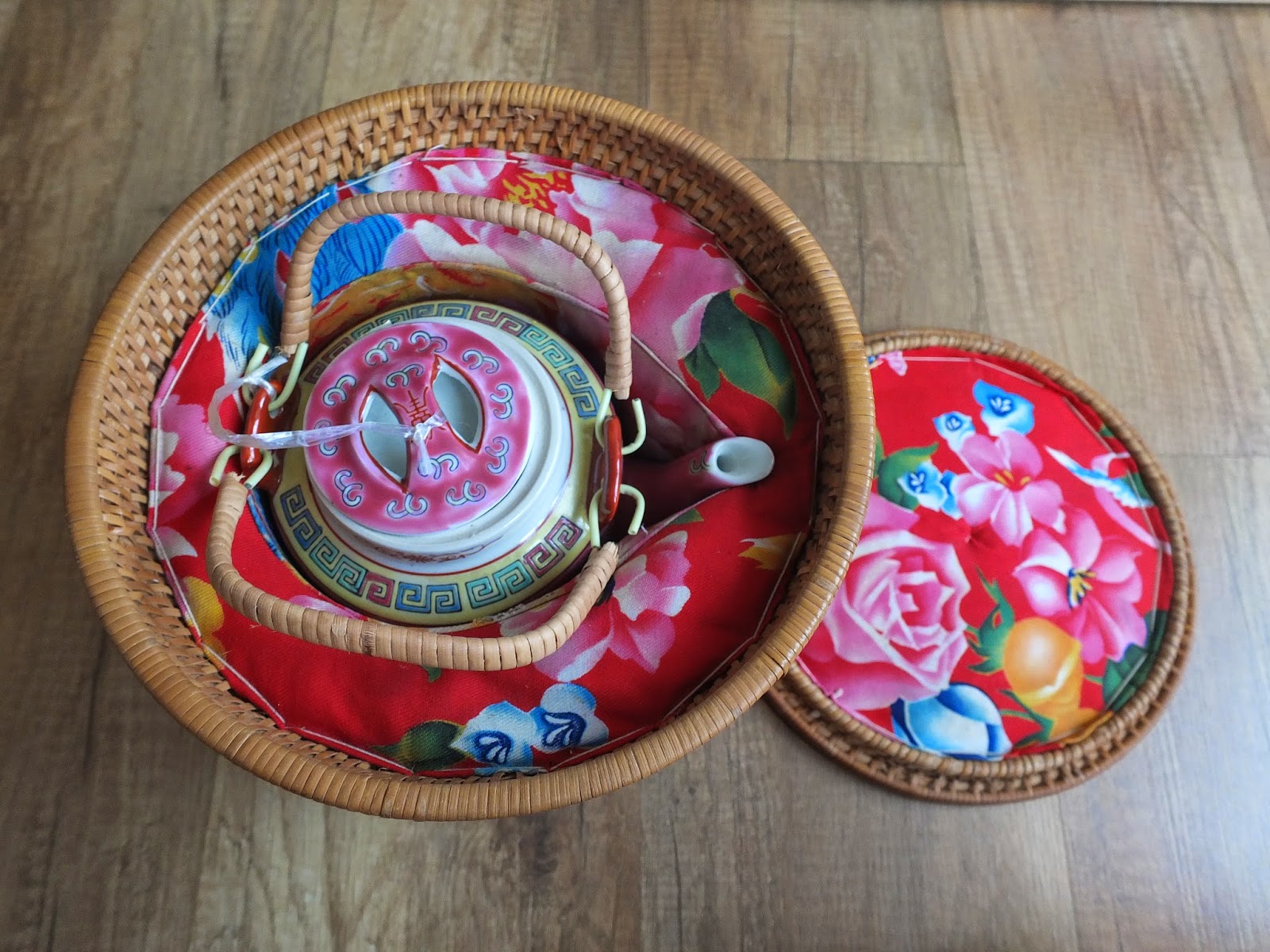Sunday, July 27, 2014
2006 Langhe 9579 Ripe Pu erh
I am impressed with the pu erh produced by Langhe Tea Factory. The ripe and raw cakes I had drank (see my earlier blogs) were to me, very good and this ripe cake I had opened was not a disappointment either.
This is a 2006 Langhe ripe cake. Unlike wines where names are given to the wines, pu erh cakes are named with a 4 digit number, which in this instance is 9579. Yes, it is quite difficult to remember these numbers especially when these numbers are only used by a specific tea factory, and tracking down such teas may be a challenge when you are in a teashop.
This Langhe 9579 has a nice strong wood and herb scent. I like this tea as it is a nice tea to brew and drink in the evening. Very smooth and has a calming effect after a tea session.
Singapore readers will be happy to know that Amoy tea (relocated to Block 48, Sims Place) has some of this inexpensive tea in their stock.
Sunday, July 20, 2014
Japanese Tea Ware
I bought some Japanese tea ware recently. Some of the tea ware, as you will have noticed from the above pictures, looked appropriate for brewing Chinese teas I am drinking. I had even purchased a few Japanese ceramic water jars with covers which I will use to store my tea (I will have a separate blog entry for these jars).
Why did I buy Japanese tea ware? They are not that expensive (almost my Japanese purchases were made through Ebay). Yes, some of these tea ware are used or old, but I was intrigued by these stuff I had bought. Somehow, there is a less 'commercial' feel to these tea ware......and I wanted to 'test' out how these tea ware would perform in a Chinese tea brewing session.
The 1st set above is called Bizen ware. They are unglazed and looked reddish brown. Bizen ware is believed to contain a higher amount of iron in the clay, and I believe that they may, like my purion teapot enhance the taste of my Chinese tea.
(do look out for my future blogs when I try out Chinese tea brewing on these tea ware). This Bizen set, comes beautifully packed in its own wooden box. The bigger bowl is called a yusamashi, a water bowl which I suspect is used to hold water and added to the 'gaiwan' when brewing Japanese tea. This set is an old used set, and was informed by my seller as being made by Konishi.
The pair of white teacups in the last few pix are straw-ashed glazed teacups. They are newly made and produced by Shibuya Deishi. I liked the look of these cups as the exterior of the teacups resembled the bark of a cherry blossom tree covered by snow exposing 'bits' of the tree bark. My seller says such teaware are classified as Hagi ware.
Time for a cup of tea.
Saturday, July 5, 2014
2006 Haiwan Pasha Raw 200g Cake
Haiwan Tea Factory in 2006 produced 2 versions of this tea. A 200g and 400g cake was made and released for sale. I had managed to snagged both versions few years ago from Yunnan Sourcing and I believed the proprietor Scott still have a couple more of the 400g cakes for sale.
This tea is non smoky but I found this tea to be very enjoyable. There is salivating sensation after I drank the tea and there was a delayed faint sweet aftertaste. Very smooth tea and a session of this tea ends quite fast.
A little expensive now, but the price is comparable to some new pu erh tea produced these 2 years. This tea is already 8 years old and I do think it gives more value for money.
Happy Independence Day!
Wednesday, July 2, 2014
A Traditional Tea Set
During the 1960s to 80s, one common sight in many homes and offices would be this basket that contain a cylindrical teapot. This tea set basically was designed to keep the tea warm for a few hours. If you noticed the 2nd pix, the interior of the basket is lined with thick foam but is 'wrapped' with a colorful cloth. Such a setup can enable up to 2 liters of tea to be kept warm. My teapot shown is smaller and holds about 1.5 liters instead. I was told that in the older days, a fresh brew was made every morning and another in the afternoon. A tray of teacups are usually located next to this tea basket. In some baskets, there are even space to store a couple of teacups.
I did ask my tea seniors if they remember how tea was brewed in such a set up. "Easy" - I was told. A few tablespoons of tea, and add hot water, and its ready to drink in a few minutes. What tea do they brew? I was told heavy roasted oolongs like TieGuanYin or Shui Hsien. Don't people drink coffee? Yes, mainly black sweetened coffee but its brewed and stored in vacuum flask instead of such a set up.
Brewing tea then was simple. I believe the term 'grandpa tea' is used to describe this brewing method. The tea leaves are perpetually soaked in the teapot and the tea will taste strong after such prolong soaking.
Subscribe to:
Comments (Atom)















